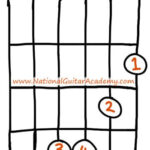The Gibson Les Paul stands as a true archetype in the realm of electric guitars. For players who appreciate a rich, sustaining tone, a shorter scale length, and the heft associated with classic rock sounds, the Les Paul remains an instrument to be experienced. My own journey began with a nod to this legend – a Japanese Ibanez LP Custom copy – before progressing to a genuine 1987 Les Paul Standard. Having spent years exploring various Les Paul models across different eras, including SG, Junior, Special, and Studio versions, I’ve developed a nuanced perspective on this iconic guitar.
What truly captivated me about the Les Paul was its inherent sustain, the comfortable feel of its shorter scale neck, and the undeniably powerful, heavy tone it delivered. These were the hallmarks that defined the Les Paul experience for me, and for countless guitarists across genres.
However, the Les Paul is not without its limitations. The tonal palette, while potent, can feel somewhat restricted compared to more versatile instruments. The typically thicker neck profile, a characteristic feature, may not suit every player’s hand. And then there’s the weight – Les Pauls are known for their substantial mass, which can become a factor during longer playing sessions.
These considerations ultimately led me to transition from my Les Paul Standard to a PRS guitar, a decision made long before PRS became widely associated with certain genres. The PRS offered a broader range of tones and a different aesthetic. Yet, even the PRS fell short in delivering the pristine clean tones I sought, relegating it to collector’s status rather than my primary instrument.
In contrast, my Music Man Axis Sport with MM90 pickups proved to be a revelation. It effortlessly bridges the gap between heavy and clean tones, boasts a significantly lighter weight, and features what I consider to be the most consistently comfortable neck I’ve encountered on any guitar. While its sonic character leans closer to a Les Paul Junior – raw and primal – the Axis Sport refines this rawness, offering a compelling blend of power and articulation.
Regarding build quality, my 80s Les Paul Standard, acquired used, had a neck warp that required correction. The angled headstock design of Les Pauls also presents a vulnerability to breakage, a common repair concern. While some Gibson enthusiasts suggest that quality has improved since the 1980s, the pricing of current models often seems disproportionate to what is offered. It’s notable that even Epiphone, Gibson’s more affordable line, sometimes showcases more visually striking figured maple tops than some higher-end Gibson Custom Shop instruments. The premium price associated with Gibson largely reflects the brand’s legendary status, although the level of handcraftsmanship may be debatable compared to other high-end manufacturers. In my experience, the playability, engineering, and wood selection across the Ernie Ball Music Man (EBMM) line surpass those of Gibson.
Is the Axis Sport a Les Paul? No, it carves its own path. Is an EVH or Axis model closer to a Les Paul in spirit? Arguably, yes, as they are both humbucker-equipped guitars designed for rock. However, any Axis guitar offers greater tonal flexibility and is considerably more budget-friendly and back-friendly than a Les Paul. Ultimately, comparing an Axis to a Les Paul is akin to comparing apples to oranges. The Axis embodies a brighter sonic character, a bolt-on, longer scale neck, lighter woods, and often a tremolo system, while the Les Paul features a shorter scale, set neck, fixed bridge, and a generally heavier overall tone.
In conclusion, while I once considered acquiring a US-made Les Paul Studio at an attractive price, I opted to invest in future Ernie Ball Music Man instruments instead. This decision reflects my personal preference for the tonal versatility, playability, and overall value proposition offered by guitars like the Axis Sport, even when acknowledging the undeniable legacy and appeal of the Gibson Les Paul.

